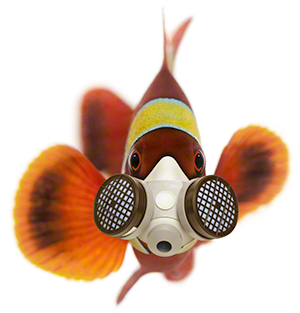Who is that masked fish?
Sept 19, 2013
This fish has a message... and it is not showing gas masks are the latest in aquatic fashion.
|
The majority of used, dirty glycols end up in our surface waters, with some crushing effects.
Some groups do think it's safe to dispose of waste glycols in our water systems. Their logic is, since waste glycols biodegrade in water over several days, they don’t pose any serious problems.
But that’s not the whole story. As these chemicals break down, they consume oxygen from water. Lack of oxygen kills fish and aquatic life.
Glycols are a triple threat: Hazardous in their original state |
Glycols are classified as a hazardous substance before they are ever used to make everyday products. During their use, they become contaminated with heavy metals, lead, cadmium and other substances that can make them even more deadly. None of those substances are healthy for our water.
The safest way to dispose of waste glycol is to not dispose of it at all.
Thats our message and our mission. New technology allows nearly all of these important and valuable liquid chemicals to be used, then treated and reused. Its also a whole lot easier than using haz-mat gear to protect fish from polluted glycols.
The future can be cleaner.
At GlyEco, we believe providing information about chemistry-based pollution solutions is good for both the environment and your mind. Our team is dedicated to creating a future with less dirty glycol going to waste. It's a big job... and we are up to the challenge. Using our breakthrough technology, we clean all types of waste glycol, help safeguard the environment and create valuable green products.









